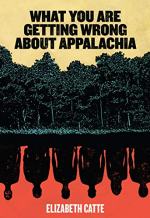|
This section contains 1,498 words (approx. 4 pages at 400 words per page) |

|
Summary
In the 1930s, President Roosevelt’s administration formed the Farm Security Agency (FSA), intended to combat rural poverty in the U.S. through the resettlement of impoverished farmers living on “sub-marginal land” (72). The FSA employed photographers to chronicle rural poverty, and many of these photographs became emblems for significant historical periods, chronicling the Dust Bowl migration and the persistent inequality experienced by African Americans. One such photographer was Lewis Hine, who became known for documenting the poor in Tennessee; another was Arthur Rothstein, who photographed residents of Virginia’s Shenandoah Valley that were evicted from the region due to the construction of a national park.
A book called Hollow Folk by Thomas Henry and Mendal Sherman argued that such people living in impoverished rural areas were “less evolved” – and thus required the help of outsiders to fix their social problems. Eugenicists picked up...
(read more from the Section 2, Part 2 Summary)
|
This section contains 1,498 words (approx. 4 pages at 400 words per page) |

|




